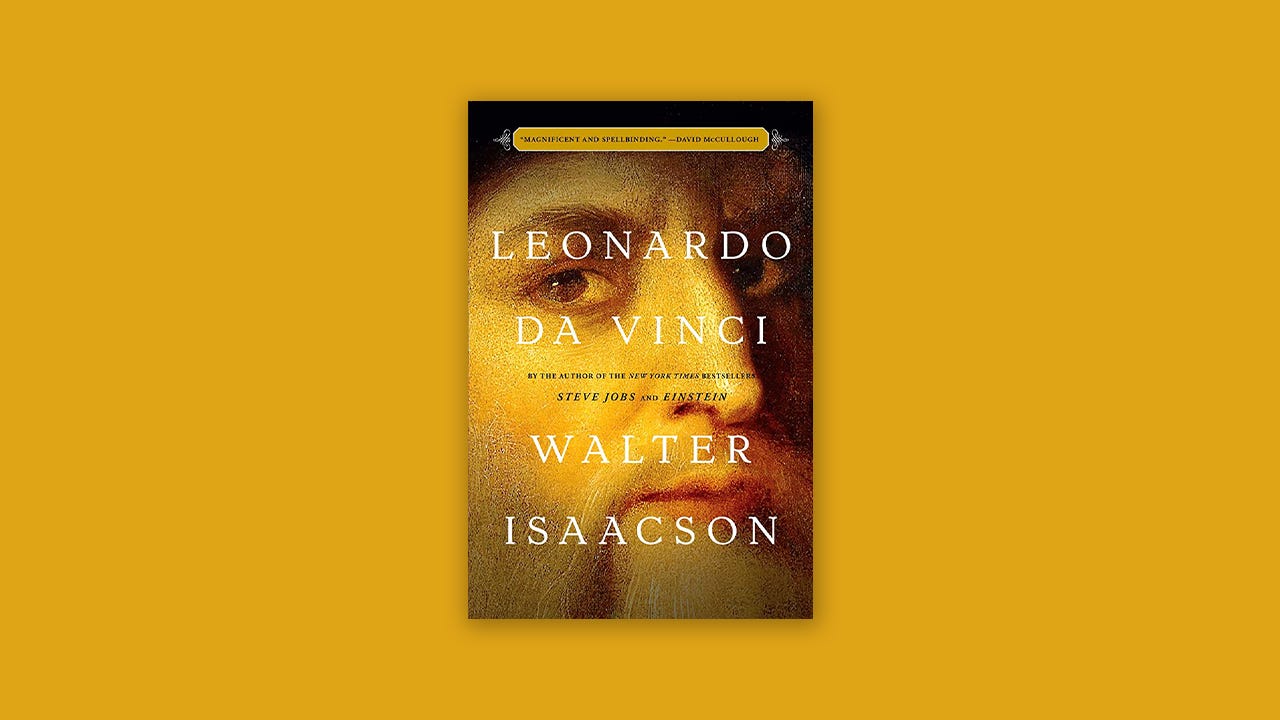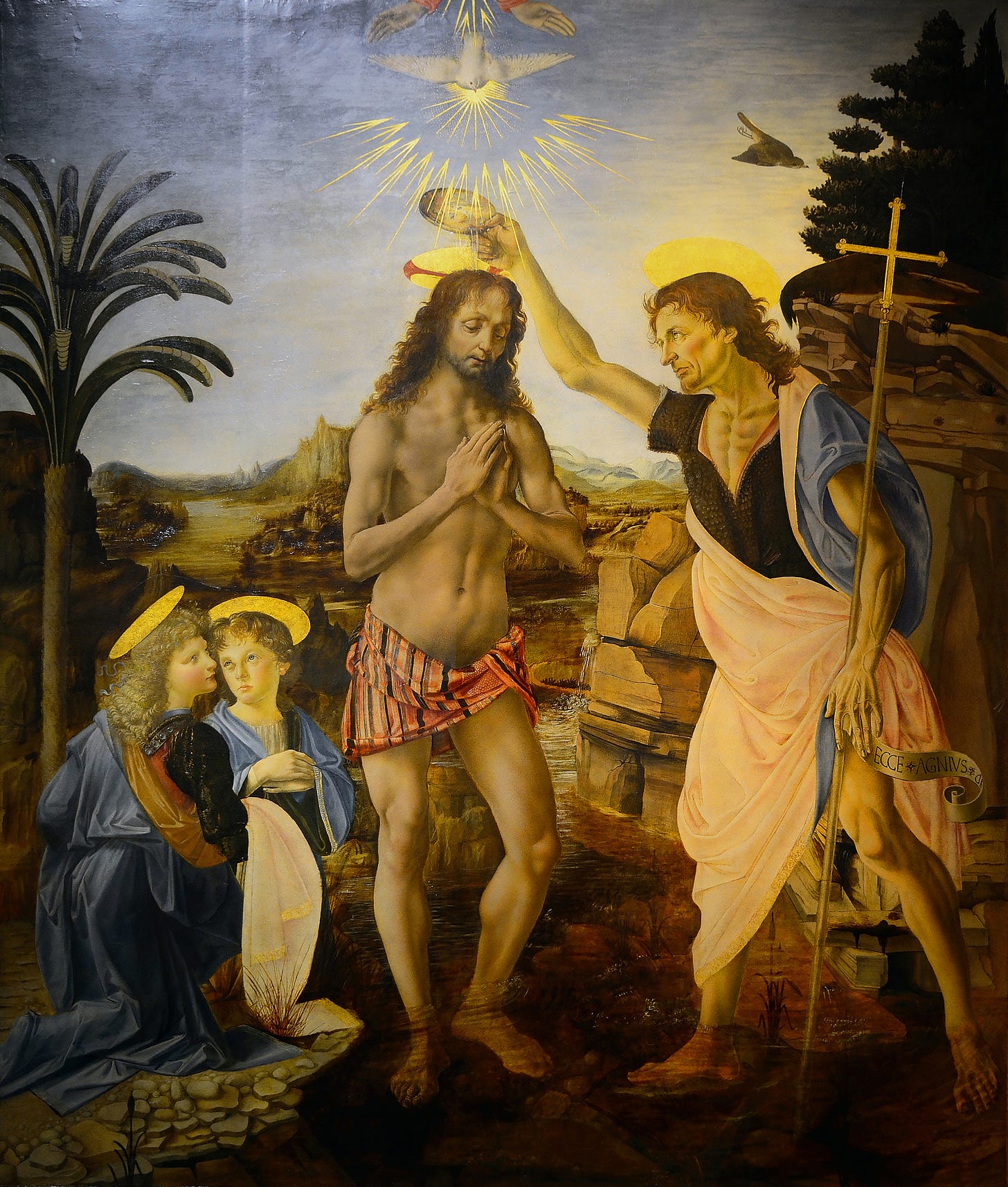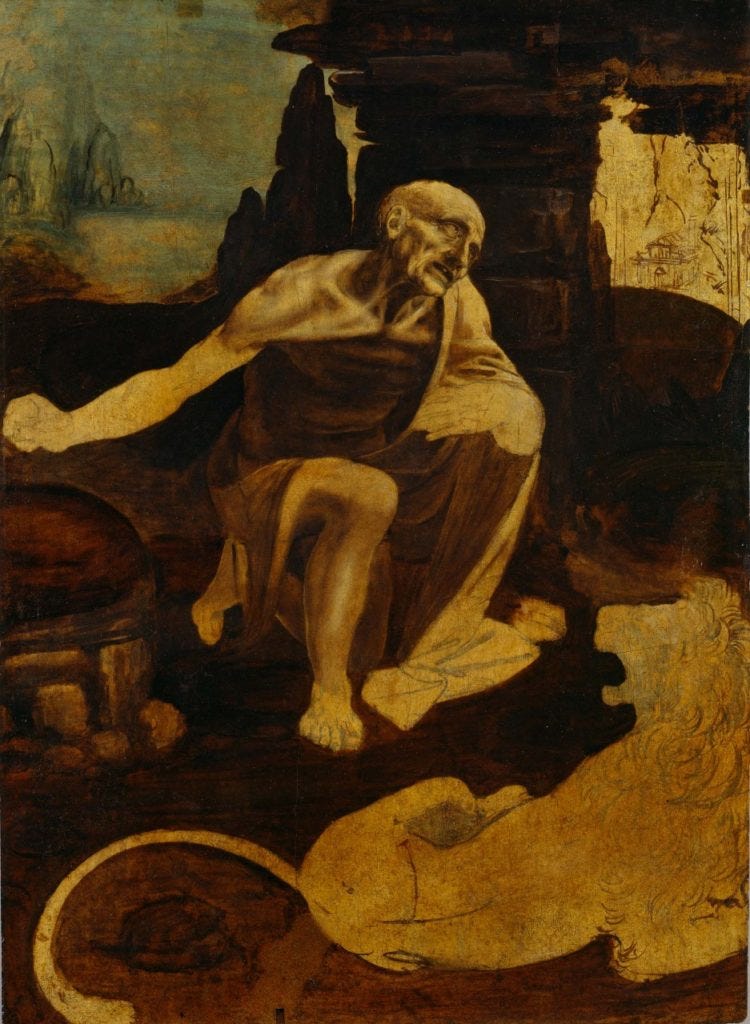Being born out of wedlock in 1400s Italy didn't leave a lot of options for the son of a multi-generation notary. It was customary in that day for the sons of tradesmen to acquire the skills of the father, but Leonardo da Vinci didn't have that luxury since he was illegitimate. He also couldn’t enroll in proper schooling.
Though da Vinci lacked traditional education, he did attend an abacus school to learn useful skills in math and commerce. It was here that he learned the value of thinking about subjects through analogies and patterns, which became "for him a rudimentary method of theorizing."
It was after, where he got an apprenticeship in Verrocchio's workshop, that his true genius began to shine.
Here’s what I learned from reading [Leonardo da Vinci by Walter Isaacson](https://bookshop.org/p/books/leonardo-da-vinci-walter-isaacson/18795658?ean=9781501139154).

Leonardo da Vinci became an apprentice of Andrea del Verrocchio (1435 - 1488) at about 14 years old. The first painting da Vinci worked on with Verrocchio was The Baptism of Christ. It's believed he worked on the leftmost angel because of its soft facial features, which the other subjects in the painting are not graced with.

Being a disciple of experience, da Vinci noticed that when he looked at something in real life, it wasn't obvious where one object ended and another began, like it so often appeared in pictures. It's hard to describe what he saw, but he didn't think there should be a harsh boundary between different objects in paintings. This lead him to embrace a painting technique called sfumato. The word, derived from the Italian word for smoke, fumo, can be roughly translated to "soft, vague, or blurred." It makes the painting look airy and like every object blends into the next.
This was just one example of da Vinci's acute observational skills represented in his paintings. He wrote in a notebook:
If you wish to have a sound knowledge of the forms of objects, begin with the details of them, and do not go on to the second step until you have the first well fixed in memory.
Isaacson writes:
Leonardo wove an argument that was integral to understanding his genius: that true creativity involves the ability to combine observation with imagination, thereby blurring the border between reality and fantasy
Leonardo's artistic genius is undoubted, but his business suave could have been better. He seemed to do okay but was never truly rich because he couldn't finish most of the pieces he was commissioned to do. There's no real reason why this happened, but there are some hypotheses.
One hypothesis is that what could be excited Leonardo much more than what was. He got so excited about a new idea that he abandoned everything else he was working on to pursue it. This cycle never ended. Isaacson wrote, "he was a genius undisciplined by diligence."
Another example could be that da Vinci wasn't about "the grind." He preferred to work very little and follow his curiosity about the world instead. He wrote in a notebook:
Men of loft genius sometimes accomplish the most when they work the least, for their minds are occupied with their ideas and the perfection of their conceptions, to which they afterwards give form.
Another reason may have been because his idea of perfection was so close to reality that it can never be pulled off to the degree Leonardo expected of himself. So, he got as far as he could on some paintings and then just stopped. He was paralyzed by perfectionism. He didn't like to finish pieces because he would inevitably learn a new fact about how a body should be positioned that he could use to make the piece better down the line. To him, nothing was more beautiful than representing Nature like it ought to be represented; and nothing more disgraceful when Nature was represented incorrectly.
Though human ingenuity may make various inventions it will never devise an invention more beautiful, more simple, more direct than does Nature; because in her inventions nothing is lacking and nothing is superfluous.
– Leonardo da Vinci
An example of this relentless perfectionism can be seen by examining St. Jerome in the Wilderness. This painting was done in two phases: the first being in 1480 when he started the painting and the second being in 1510. Under infrared analysis of the painting, you can see dual neck muscles and other parts added in 1510 that were not part of the original drawing. These additions seem to align with the anatomical discoveries da Vinci was making through his autopsies at the time. This implied he started the painting in 1480, but then changed it 30 years later to add small neck muscles that he didn't know existed before. His perfectionism was a virtue, but it was also his vice.

Da Vinci valued experience to a degree that lead him to dissect some 300+ bodies throughout his lifetime. He wasn’t a psychopath, though, he wanted to understand the layout of the human body and how muscles move different body parts.
Lesson: Be more curious
Da Vinci didn't intend for his life to come under a microscope 500 years later, yet, there is one thing we can learn when we do so: to observe and be curious about the little things in life more often.
Isaacson writes:
I did learn from Leonardo how a desire to marvel about the world that we encounter each day can make each moment of our lives richer.
He continued:
Yes, he was a genius: wildly imaginative, passionately curious, and creative across multiple disciplines. His genius was based on skills we can aspire to improve in ourselves, such as curiosity and intense observation.
If we look at Leonardo for a thesis on how to approach life, he might say to do so "with a sense of curiosity and an appreciation for its infinite wonders."
That, Mr. da Vinci, I will strive to do.
Tagged